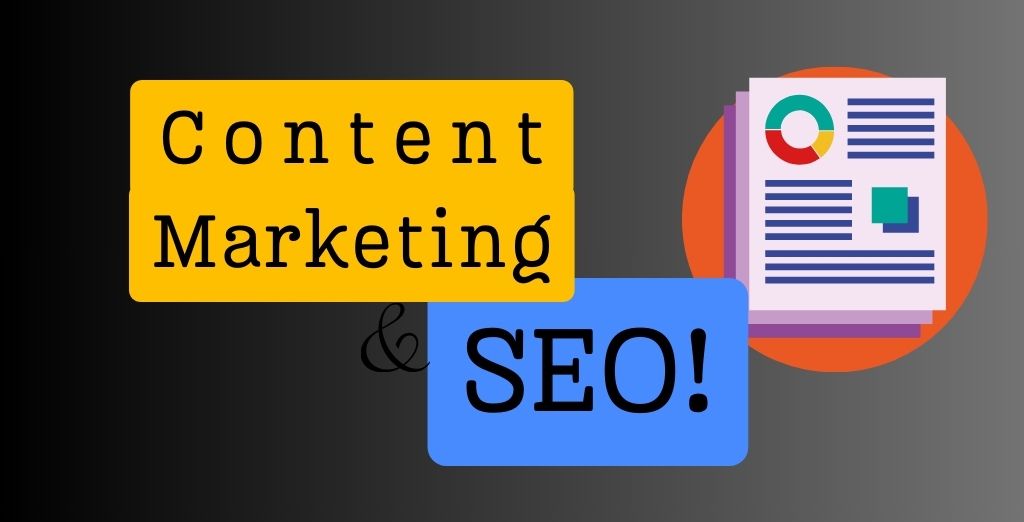Content Marketing and SEO: A Powerful Duo for Digital Success
This is a period during which brands are fighting for visibility in an overcrowded digital space, so two strategies become highly important pillars underpinning growth: content marketing and SEO. These two concepts, though differing from each other, are intertwined. When working together, they would ultimately and drastically increase visibility, authority, and conversion prospects for any given brand.
This article examines what content marketing and SEO are: how they work together and some best practices to make the most of their coexistence to benefit your chances for digital success.
What is Content Marketing?
It is a strategic way of content focused on creating and delivering valuable, relevant, and consistent content to attract and retain a defined audience at the end-for-profit customer action.
Instead of selling a good product or service to potential customers buying, content marketing aims at educating potential customers to create that relationship of trust and thought leadership over time.
Common Types of Content:
- Blog posts and articles
- Videos and podcasts
- Infographics
- E-books and whitepapers
- Social media content
- Email newsletters
- Case studies and testimonials
To put it simply: Content marketing done right should have the authentic purpose of adding real value. If audiences see a piece of content as being beneficial or engaging, they tend to trust the brand, return to the website, and finally become loyal clients.
What is SEO?
SEO is the optimization of any website and of all its content to get a better position in the Search Engine Results Pages (SERP) to increase the amount and quality of organic traffic, i.e., thet traffic is not paid.
SEO is a science and an art; it is just as much answering the questions of what the user is searching for online, what keywords are being searched for, and what type of content is being desired by the user as it is about creating content which really gets good answers for these in a format that can be easily recognized by the search engine. The better you get to answer these questions with your content while serving it in a way that search engines are able to comprehend, the better the chances to rank your content higher.
SEO Key Components:
- Keyword research: Finding out what search terms are relevant to the desired target audience.
- On-page SEO: Making content and optimizing meta tags, headers, images, and internal links.
- Off-page SEO: Building links and building authority on the domain.
- Technical SEO: Making sure the website performs fast, is mobile-friendly, is quick to load, and is indexable.
- User experience (UX): Making navigation and engagement easy from the website side.
How Content Marketing and SEO Work Together
Despite both content marketing and SEO being viable standalone disciplines, their true synergy and power become apparent when they are employed in collaboration. With the technical structure and directions for content, SEO provides the skeleton of the whole process, whereas content fuels the meat of SEO activities.
1. Content Is the Foundation of SEO
Search engines ultimately look for the best content that is relevant to their users. Without good content, there’s nothing for SEO to optimize. Content essentially takes the role of a vessel where keywords, links, and SEO strategies would work.
A keyword with the target “best hiking boots” would only be effective if a nice composition of a blog post or product page would discuss such best hiking boots in terms of comparisons, user reviews, and rich media.
2. Keywords Guide Content Strategy
As with SEO keyword research, marketers learn what their audience is searching for. Their content marketing utilizes that insight to create specific blog posts, videos, and resources tied to those needs.
So if keyword research taxes the exact phrase “how to start a podcast” through high search volume, a content marketer can create extensive documentation addressing that precise topic and optimize its content in accordance with those relevant keywords.
3. Content Drives Backlinks and Authority
Backlinking is one of the foremost ranking factors in the SEO decision-making process. If your content is insightful, original, and valuable, websites will be more inclined to regard it as a trustworthy source of information and link back to it. This creates a pathway of backlink trustworthiness toward your domain: the higher the backlink, the higher the rank in the respective search engine.
An attractive infographic, thorough tutorial, or original research can become link bait, garnering backlinks and shares that enhance the SEO lustre.
4. SEO Enhances Content Visibility
Your content can be absolutely brilliant, but unless it gets seen by the right audiences, it is basically worthless. With these kinds of techniques, search engine optimization alone provides an extra chance to avail the intended crowd by making the content indexed on search engines like Google and Bing. The stronger the SEO ranking your content has, the better it will be noticed by the crowd, thus giving you a higher number of ROI for your content marketing investments.
Best Practices for Combining Content Marketing and SEO
To complement each other and offer the greatest possible value, content marketing as well as search engine optimization demand a strategic integration. Here are a few best practices:
1. Perform Strategic Keyword Research
Before producing content, one should do keyword research with tools like the Google Keyword Planner, Ahrefs, or SEMrush. Look out for the terms that have high search volume and low-to-moderate competition. Consider long-tail keywords here since they are more specific and may indicate an intention for a particular person to find your content.
Naturally incorporate these keywords into the appropriate titles, headers, meta descriptions, and body content.
2. Create High-Quality, Value-Driven Content
Search engines are highly rewarded for creating such content, which is useful, and then solving the problems, answering the queries, or even keeping their audience entertained. Make sure that your content:
- Well-researched
- Easy to read
- Visually appealing
- Free from fluff and filler
- Regularly updated
Aim for depth and completeness — content that fully satisfies user intent.
3. Optimize On-Page SEO Elements
Every piece of content should include optimized:
- Title tags and meta descriptions
- Header tags (H1, H2, H3)
- Internal and external links
- Image alt text
- URL structure
These elements help search engines understand your content and improve user experience.
4. Publish Consistently
And now, here comes the most important benefit of consistent publishing: authority in the eyes of search engines and users. This could mean once a week or twice a month, but strike a cadence that both your team and your audience can live with.
In the long run, consistent publication of content will generate a bigger library of materials, wider exposure to various keywords, and thus more traffic.
5. Promote Content Across Channels
Promoting your content far and wide will also help people discover it through other means. These include:
- Social media
- Email marketing
- Influencer outreach
- Paid ads
- Guest posting
Visibility equates to engagement and sharing, along with generating backlinks-all of this applies towards better SEO.
6. Measure, Analyze, and Adjust
Use analytics tools like Google Analytics, Search Console, and content performance dashboards to track:
- Organic traffic
- Keyword rankings
- Bounce rates
- Dwell time
- Conversion rates
These insights reveal what’s working and where you need to adjust your strategy.
The Long-Term Benefits of Integrating Content Marketing and SEO
A heavily integrated content and SEO strategy does not bring about an immediate course change, but the profits realized in the long term could be colossal.
Benefits Include:
- Higher organic traffic: High-ranking content for months and months still ensures that the click attracts high traffic.
- Brand authority: As an industry leader in your field, you build a reputation with consistent high-value content.
- Higher conversion rates: Trustworthy content nurtures leads and also guides them through the funnel.
- Cost-effective: Evergreen content continues to deliver ROI for quite a while because it is not as paid ad requirements.
Conclusion
In the present era, when competition is razor-sharp and attention spans are short, content marketing and SEO are not simply an asset, rather they are should-haves. With a symbiotic relationship when put together, they create magic for your visibility, credibility, and customer acquisition.
The trick is to be a little more strategic; let SEO tell you what content topics to cover and let great content breathe life into your SEO. Despite ever-evolving algorithms and changing consumer behavior, one truth will remain — businesses putting their money into useful content that is easily discoverable will be in a class of their own competitively.
Whether you’re a sole proprietor, a marketer, or a content creator, doing well in marrying SEO and content marketing will launch you into continued growth in the digital universe.
Author







